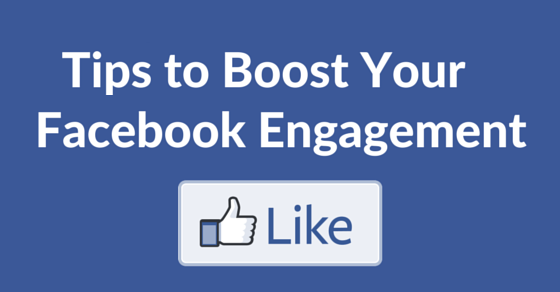Spammy Tactics to Avoid When Running a Blog
May 26, 2017 by admin · Leave a Comment
Article Written by : Merchant Account Central
Google is always hunting for sites that it can classify as spammy. Although there is no direct confirmation, there are is both an automated and manual review of websites before they are marked as spammy. Sites flagged in the automated review are then queued for manual review if there is some uncertainty. Websites are then notified via Webmaster Tools (now known as Search Console) and then allowed to ask for reconsideration after fixing whatever issues. Here are some known tactics to avoid getting slapped by Google with a penalty:
Sidebar Links
Links to other websites from the sidebar are now frowned upon. Especially if the link is to an internal page and not to website domain. Google first de-emphasized the link juice from these links and now uses them as a signal to detect spammy websites. What worked as link exchanges in the past is now something to be avoided.
Footer Links
Even footer links are frowned upon. It is believed that certain themes were created for the sole purpose of getting backlinks to other domains. Sitewide footer links with keyword based anchor text will also appear spammy.
In Content Links
Articles on blogs always tend to have links within the text body. However too many external links that are marked as dofollow can also cause problems. The best is to either go nofollow or mix up the links so as not to appear overly spammy. Preferably link to high authority sites along with lower ones in order to avoid issues.

Common UI patterns in web design
May 26, 2017 by admin · Leave a Comment
Article Written by : How Merchant Accounts Work
Design patterns have matured greatly in the last few years. There are probably two reasons behind this. First is the proliferation of responsive design. The second is the sheer popularity of WordPress and its theme market. In a way, there is very little left in the way innovation to be found in design for a multi-screen world. It would take a shift to a medium like VR for these fundamentals to change. Here are the most common UI patterns in use today:
The hamburger menu
There is a lot of criticism of the hamburger menu. Regardless, its use has spread from mobile view pages and Android apps to any collapsed menu. It was popularized by Google’s material design guidelines.
New account creation
This is another common pattern that will have a basic information form or buttons to sign up using one of the primary social networks. Some sites break chunk the required fields into multiple pages to make it easier.
Long scroll
Thanks to the smartphones, everyone is now used to continuously scrolling down. The requirement that all important content is above the fold no longer holds true. Part of what makes this effective on the web is when the long scroll is sectioned into clear parts.
The card layout
The credit for this goes to Pinterest. Since then many interfaces have changed their layout to mimic the card layout that was used so effectively. It makes for perfect cross page scanning and the rectangular shape allows for easy arrangement of different sizes.

Three Tips for Boosting Engagement on Facebook
May 21, 2017 by admin · Leave a Comment
Article Written by : Charity Banners
Most brands and companies have a Facebook presence, but too many of them aren’t connecting with customers and fans. If fans aren’t engaging with the brand through this portal, what’s the point?
Facebook fans can be leveraged to provide brands with valuable feedback, so companies should strive to maintain free-flowing conversation with those individuals. With this in mind, here are three tips for boosting engagement on your brand’s Facebook page.
1. Get down with the visuals.
Everyone likes a good Facebook picture, and the data backs this up—photos get the most likes and comments of any of the other kinds of status updates (links, text, etc). Don’t hesitate to share insights or ask questions using a photo. You might be surprised at the response, particularly if the photo includes text asks an intriguing question or provides an inspirational message. If you regularly ask questions of your page’s fans via plain text, consider converting those queries to photos. Even a brightly colored word cloud is more visually attractive than plain text, and at the very least, more eyes will be drawn to your post, and more eyes means more responses.
2. Get personal.
It might be true that corporations aren’t people, but they are people-driven. If you visited a company, you wouldn’t find empty offices run by robots, so don’t let your Facebook presence give that impression.
Letting fans see the human side of a brand can be very effective for spurring discussion. It also instills a sense of connection and comfort. Did someone on your customer service team have a birthday? Post a photo of the team gathered around the cake. Have you sponsored a team retreat? Collect a few personal reflections from staff members. One of the most frustrating things in life is dealing with a faceless brand or company, so put faces to your name whenever possible.
Does this mean your brand has to delve deeply into each employee’s life? Absolutely not. But offering a little access behind the office doors can go a long way toward maintaining open communications with customers and fans, and that’s a conversation you definitely want to have.
3. Ask for feedback.
Inevitably, any brand will make a move that garners some criticism. However, one great way to both boost engagement and avoid negative press is to be proactive about collecting customer feedback. Fans on Facebook are brand fans for a reason, and many won’t hesitate to let you know what they think of your products or services.
Instead of waiting for them to come to you, why not use your brand’s Facebook page to preemptively reach out to them? Post pictures of newly released products and ask sincerely for their input, making sure that someone is on hand to offer some responses. If customer input from the page is strong enough to effect a change in one of your products or policies, let customers know, and thank them for their time. For example: “We’d like to thank our fans for their input, which led to some important tweaks to the [Name Here] line that boosted our sales. Keep it coming!”
The main thing to remember when engaging with fans is that the conversation is key. Give your Facebook brand followers something to talk about, and your company can glean great insights from those who use your products or services every day. Treat them with respect and humanity, and you’ll be building the foundation for a conversation that will last the lifetime of your brand. Fostering this environment doesn’t have to be difficult, but it does take some commitment on the part of the brand. Why not start connecting today?
